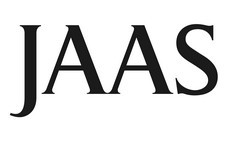Plenary and keynote lecturers
Renown scietists who have already accepted the invition to present lectures at the 2013 EWCPS:
- Ramon Barnes, USA
- Ewa Bulska, Poland
- Nicolas H. Bings, Germany
- Joseph Caruso, USA
- Jörg Feldmann, UK
- Detlef Günther, Switzerland
- Alex Halliday
- Volker Hoffmann, Germany
- Gary Hieftje, USA
- Kazumi Inagaki, Japan
- Krzysztof Jankowski, Poland
- Laurent Ouerdane
- Jorge Pisonero, Spain
- Thomas Prohaska, Austria
- Richard E. Russo, USA
- Alfredo Sanz-Medel, Spain
- Atitaya Siripinyanond, Thailand
- Andrea Ulrich, Switzerland
- Frank Vanhaecke, Belgium
- Lu Yang, Canada
Ramon Barnes

Ramon Barnes is director of the University Research Institute for Analytical Chemistry, Professor Emeritus of Chemistry at the University of Massachusetts, editor/publisher of the ICP Information Newsletter (1975- ), and chairman of the Winter Conference on Plasma Spectrochemistry (1980- ). He received a Ph.D. in analytical chemistry from the University of Illinois, Champaign/Urbana, in 1966, an A.M. in chemistry from Columbia University, New York, in 1963, and a B.S. in chemistry from Oregon State University, Corvallis, in 1962. He was a postdoctoral research fellow at Iowa State University, Ames, in 1968 and 1969. He served as a Captain in the U.S. Army at NASA Lewis Research Center, Cleveland, from 1966 to 1968. From 1969 to 2000 he taught analytical chemistry and maintained an international research program at the University of Massachusetts, Amherst. In 2000 he became professor emeritus. He has published more than 300 papers, edited four books, and continues an active research interest in fundamentals and applications of inductively coupled plasma (ICP) discharges for spectrochemical analysis.
In 2003 he received the Lester W. Strock Award from the Society for Applied Spectroscopy for outstanding work in the development of the flow field-flow fractionation ICP technique. In 2007 he was elected Fellow of the Society for Applied Spectroscopy. In June 2008 he received the Török Tibor Award and Commemorative Medal from the Spectrochemical Association of the Hungarian Chemical Society during their annual national meeting. He received the first Winter Conference Award in Plasma Spectrochemistry sponsored by Thermo Fisher Scientific in January 2010 at the 2010 Winter Conference on Plasma Spectrochemistry.
The University Research Institute for Analytical Chemistry (URIAC) is the research and development division of ICP Information Newsletter, Inc., a not for profit corporation established in 1997 to foster science education, research, and study in spectroanalytical chemistry. URIAC provides specialty plasma spectrochemical analysis, method development, training, consulting, and applied research with ICP atomic emission spectrometry and ICP mass spectrometry for ultratrace metal and stable isotope analyses in environmental forensics, drug development, medicine, public health, and semiconductor manufacturing.
Nicolas H. Bings
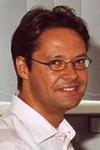
Nicolas H. Bings is a professor at the Institute of Inorganic and Analytical Chemistry of the Johannes Gutenberg-Universität in Mainz, Germany. His scientific interest include problem-oriented analytical chemistry with special reference to the determination of the elements and their species and the development and use of plasma atomic spectrochemical methods. This includes the application of new analytical techniques especially plasma source mass spectrometry, laser ablation and miniaturized analysis systems for trace elemental determination within the interdisciplinary areas of environmental analysis, bio-analysis and material sciences. Professor Bings is a member of the Editorial Advisory Board of Spectrochimica Acta (Part B) and the Associate Editor of Encyclopedia of Analytical Chemistry.
Ewa Bulska
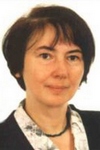
Graduated at the Faculty of Chemistry, Warsaw University.
Presently Head of the Theoretical Aspects of Analytical Chemistry Group.
Member of the Committee of Analytical Chemistry of Polish Academy of Sciences
Head of the Commission of Atomic Spectrometry of the Committee of Analytical Chemistry of Polish Academy of Sciences
Working out-side of home university in Germany, Sweden, France and Belgium.
Author or co-authors of over 140 scientific publications, co-author of several chapters, author of a book “Metrology in chemistry”, and co-authors of a number of papers focused on the metrology in chemistry.
Awarded with Bunsen-Kirchoff Award (Gesellschaft Deutscher Chemiker); Wiktor Kemula Medal (Polish Chemical Society); W. Świętosławski Award (University of Warsaw)
Topics of interest: analytical chemistry: inorganic and bioinorganic trace analysis; environmental, clinical and food samples; archeometry; atomic spectrometry (AAS, OES, MS); atom formation process in graphite furnace and in plasmas; mechanism of matrix interferences; hydride generation with AAS, ICP and MIP OES; Investigation of speciation with GC MIP-OES, HPLC ICP-MS or solid sorbents with AAS (mercury, antimony, selenium and aluminium). Flow and flow injection system for AAS, OES and MS; The use of EPMA, SIMS, XANES and LA ICP-MS for the investigation of surface and sub-surface domain of various solids (graphite, archeological samples, plants); Isotopic dilution in ICP-MS; chemical isotope effects of Ga, In and Ge; metrology in chemistry: validation of analytical techniques; traceability in chemical measurements; uncertainty evaluation; quality system in chemical laboratories.
Members of the Editorial Board of TrainMiC® programme and the Team Leader of PL TrainMiC® team.
Joseph A. Caruso
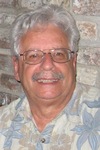
Joseph A. Caruso Distinguished Research Professor
Joe Caruso holds a Ph.D. from Michigan State University. After a one-year postdoctoral fellowship at The University of Texas - Austin, he joined the University of Cincinnati Chemistry faculty and since then he has authored or co-authored 400 scientific publications and presented more than 350 invited lectures at universities, scientific meetings, government and industry labs. His current research interests are in metallomics studies in biomedical research areas and involve metal toxicities and their molecular consequences.
Caruso is a member and Fellow of the American Chemical Society, Fellow of the Royal Society of Chemistry, American Association for the Advancement of Science Fellow and Fellow of the Society of Applied Spectroscopy. He served as first Chair of the RSC Metallomics editorial board. He has been honored many times including the 2000 Spectrochemical Analysis Award given by the Analytical Division of the American Chemical Society, the University of Cincinnati - Excellence in Doctoral Student Mentoring Award in 2006 and in 2007 he received the Rieveschl Award for Distinguished Scientific Research. Most recently he was promoted to Distinguished Research Professor.
Detlef Günther
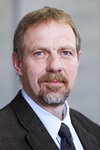
Detlef Günther obtained a Diploma degree in Chemistry in 1987 and a Ph.D. degree in Analytical Chemistry from the Martin-Luther-University Halle-Wittenberg under supervision of L. Moenke-Blankenburg in 1990. His postdoctoral work in the Institute of Plant Biochemistry Halle was focused on development of analytical methods to characterize heavy metal-binding proteins using HPLC-ICP-MS. Next, he joined the group of H.P. Longerich at the Memorial University of Newfoundland, Canada. In 1995 he start working at the Institute of Isotope Geology and Mineral Resources at ETH Zürich, where in 1998 he was appointed as Assistant professor in the Laboratory of Inorganic Chemistry, in 2003 was promoted to Associate professor for Trace Element and Micro Analysis and became Full professor in 2008. Since August 2010 he is Chair of the Department of Chemistry and Applied Biosciences at ETH Zurich.
He is recipient of the Ruzicka Award (2002), the European Award for Plasma Spectrochemistry (2003), the Fresenius Award (2007) and the Lester Strock Award (2007).
His research is focused on fundamentals and application of Inductively Coupled Plasma-Mass Spectrometry (ICP-MS) and Laser Ablation-Inductively Coupled Plasma-Mass Spectrometry (LA-ICP-MS), which includes studies on laser-sample interaction, aerosol transport and plasma-related excitation processes. Fundamental processes of UV-ns and UV-fs laser ablation in combination with Q-ICP-MS, SF-ICP-MS, ICP-TOFMS and MC-ICP-MS as well as alternative excitation sources, such as Glow discharge are currently under investigation. The trace element, micro analysis and isotope ratio determinations have been demonstrated on a wide variety of applications.
Jörg Feldmann
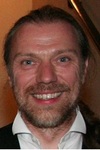
Jörg Feldmann has studied and worked in Germany, South Africa and Canada before he was pointed to his first academic post at the University of Aberdeen, Scotland in 1997. Since 2004 he is Professor in Environmental Analytical Chemistry and is head of TESLA (Trace Element Speciation Laboratory). He has written more than 150 peer-reviewed papers in analytical but foremost in environmental and bioscience journals. His papers achieve currently an annual citation rate of more than 600. He is mainly interested in describing environmental processes at the molecular level by using elemental and molecular mass spectrometry for speciation and bio-imaging. He is currently member of the international advisory boards of ABC and Environmental Chemistry.
Alex Halliday
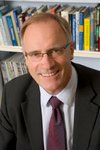
Alex Halliday has been Head of the Mathematical, Physical and Life Sciences Division at Oxford University since October 2007. Before coming to Oxford, he spent twelve years as a professor at the University of Michigan, Ann Arbor, US, and then six years in Switzerland, where he was Head of the Department of Earth Sciences at the ETH in Zurich. In 2004 he took up the Chair of Geochemistry at Oxford.
His research involves the development and use of isotopic methods to study Earth and planetary processes and has resulted in over 300 articles in scientific journals including 38 in Science and Nature. An enthusiast for technological innovation, most of Alex Halliday's recent research is in developing and using multiple collector inductively coupled mass spectrometry. Specifically he and his research team have developed powerful high precision methods for the measurement of Si, V, Ni, Zr, Te, W, Tl and U isotopic compositions. These and other methods have been used to shed light on the origin and early development of the Solar System and recent Earth processes, such as continental erosion and climate. However, he has also been engaged in diverse other studies, from the mechanisms of volcanic eruptions to the formation of mineral and hydrocarbon deposits.
Halliday is a former President of the Geochemical Society and of the European Association for Geochemistry. He has experience with a range of top science organisations including the UK's Natural Environment Research Council, the Max Planck Institute for Chemistry, Mainz, the Royal Society and the American Geophysical Union.
His scientific accomplishments have been recognised with awards including the Murchison Medal of the Geological Society, the Bowen Award of the American Geophysical Union and most recently the Urey Medal of the European association of Geochemistry. He was elected a Fellow of the Royal Society in 2000.
Gary M. Hieftje
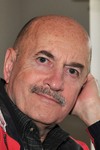
Gary M. Hieftje is Distinguished Professor and Mann Chair of Chemistry at Indiana University in Bloomington, Indiana. His research interests include the investigation of basic mechanisms in atomic emission, absorption, fluorescence and mass spectrometric analysis, and the development of instrumentation and techniques for atomic and molecular methods of analysis. He is interested also in the on-line computer control of chemical instrumentation and experiments, the use of time-resolved luminescence processes for analysis, the application of information theory to analytical chemistry, analytical mass spectrometry, near-infrared reflectance analysis, metallomics, and the use of stochastic processes to extract basic and kinetic chemical information. He has won numerous awards in the fields of analytical chemistry, chemical instrumentation, and spectroscopy, has held major offices in several scientific societies, has delivered many named lectures, and has served on the editorial boards of many major journals. He is the author of over 560 publications, 10 books, and 18 patents. More than 65 students have received doctorates under his direction; many others have received M.S. degrees, and scores of undergraduates and visiting scientists have performed research in his laboratories.
Volker Hoffmann
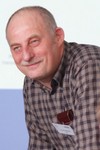
Volker Hoffmann joined the Central Institute of Solid State Physics and Materials Research in Dresden (now Leibniz Institute of Solid State and Materials Research) in 1986. Here he developed systems for automation in quantitative analysis of mass and optical spectrography and adopted glow discharge spectroscopy in the materials research of his institute. His later activities were mainly focused on the research and development of glow discharge optical (GD-OES) and mass spectrometry (GD-MS), which are performed in cooperation with different companies and research groups in Europe and USA.
The present research of this group within a joint DFG and NSF project together with the groups of Gary Hieftje in Bloomington/USA and Wolfgang Buscher in Münster focuses on time and spatial resolved imaging spectrometry of glow discharges. Other projects concern plasma modelling and application of glow discharge sputtering for SEM- and TEM-sample preparation.
2006 Volker Hoffmann became chairman of the Steering Committee of the European Working Group for Glow Discharge Spectroscopy and he is Secretary of the corresponding German workgroup. Since 1995 he organised many national and international scientific meetings, like the GDS post symposium of the CSI in Leipzig and German users meetings. He published more than 100 papers in refereed journals and books and owns seven patents.
Kazumi Inagaki
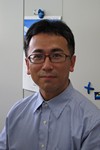
Kazumi Inagaki is a senior researcher of the environmental standard section in Metrology Institute of Japan (MIJ), National Institute of Advanced Industrial Science and Technology (AIST). He joined the group of H. Haraguchi at Nagoya University in 1995 and received his PhD from Nagoya University in 2000. He became a researcher in MIJ/AIST, and was promoted to his current position in 2008. He has been developed many certified reference materials for trace element analysis of food and environmental samples. His current research interests are focused on the development of novel sample introduction system for plasma spectrometry mainly for ICP-OES and ICP-MS.
Krzysztof Jankowski
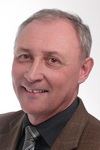
Krzysztof Jankowski is Associate Professor in the Department of Analytical Chemistry at the Warsaw University of Technology. He received his MSc and PhD from the Warsaw University of Technology and was awarded his D.Sc. by the Minister of Science and Higher Education for his thesis entitled “Microwave induced plasma as an excitation source for spectrochemical analysis. Characterization and application” in 2003. He works on atomic and mass spectrometry and his research interests include the designing of plasma sources and sample introduction devices, plasma diagnostics and analytical applications of plasma spectrometry. He is also interested in process analytical chemistry methods and applications.
Laurent Ouerdane
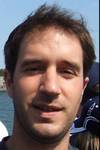
Laurent Ouerdane is an assistant professor (since 2009) in the Laboratory of Analytical Bio-Inorganic and Environmental Chemistry (LCABIE) at the University of Pau (UPPA) in France. He obtained his Ph.D. in environmental chemistry with the European label in 2004. From 2006 to 2008, he was a post-doctoral scientist at the Institute for National Measurement Standards (National Research Council Canada, Ottawa). His current topics of interest include the speciation of metals and metalloids bound to organic molecules (covalently or not) in living organisms (microorganisms, plants, mammals, human…) and the development of novel analytical methods to characterize and screen metal/loid-containing species by LC coupled to ICP MS and/or ESI MS/(MS).
Jorge Pisonero
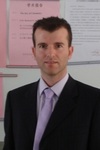
Jorge Pisonero is Tenured Lecturer at University of Oviedo (Spain). He obtained his Ph.D. in Physics with the European label in 2004. From 2005 to 2006, he was a postdoctoral scientist at the Swiss Federal Institute of Technology (Eth-Zürich). Currently, he is the deputy leader of the Laser and Plasma Spectroscopy Group (www.unioviedo.es/gelp) and Director of the Environmental Assay Unit at University of Oviedo. His current topics of interest include the investigation and development of:
- Low pressure glow discharge optical emission spectroscopy and mass spectrometry for direct solid analysis with high depth resolution.
- Atmospheric pressure glow discharge as ambient mass spectrometry sources.
- Laser induced plasmas for direct solid analysis with high spatial resolution and high sensitivity (i.e. LA-ICP, LA-GD and LIBS).
Thomas Prohaska
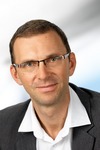
Thomas Prohaska is analytical chemist at the Austrian University of Natural Resources and Life Sciences where he is involved in research and teaching. The major focus lies on elemental and isotopic analysis by using mass spectrometric techniques for applications in analytical ecogeochemistry. The main areas of research cover the fields of food provenance and quality, environmental biomonitoring, migration studies and forensic science.
Born in 1968, he studied Chemistry at the Vienna University of Technology. He received his PhD with summa cum laude in 1995 in the field of surface analysis by scanning probe microscopy and became scientific researcher at the BOKU Vienna to built up a laboratory for elemental trace analysis. 1996 he was visiting scientist at the Muroran Institute of Technology in Japan and from 1998 to 2000 he was working as researcher at the European Commission joint research center IRMM in Geel/Belgium. Afterwards, he returned to Vienna with the focus on stable isotope research and became associate professor at the Department of Chemistry in 2002. A research award from the Austrian Science Fund (START prize by the FWF and the Austrian Ministery of Science) enabled the setup of a new isotope research laboratory (VIRIS laboratory) in 2006. 2011, he was visiting scientist in Singapore and moved in the same year with the VIRIS laboratory to the new research building set up in Tulln, Austria, where the laboratory has a strong focus on analytical ecogeochemistry.
Thomas Prohaska is author of more than 100 peer reviewed scientific publications. He is member of the board of directors of the Austrian Society for Chemistry and Physics, member of the certification advisory panel of the EC-JRC IRMM, Belgium, Geel, member of the IUPAC subcommittee on Isotopic Abundance Measurements, member of the IUPAC subcommittee on Stable Isotope Reference Material Assessment, titular member of the IUPAC commission on Isotopic Abundances and Atomic Weights, member of the Austrian Academy of Science (directorial board of the ‘junge Kurie’), member of the working group on Techniques and Standards for Destructive Analysis of the ESARDA (Europan Safeguards Research and Development Association), member of the EURACHEM WG for education and training and the Austrian representative for the European Comission TrainMiC program.
Alfredo Sanz-Medel
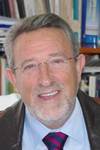
Alfredo Sanz-Medel is Professor of Analytical Chemistry at the University of Oviedo (Spain).
His research interests include the use of plasma detectors and analytical methodologies for ultratrace elemental analysis, molecular optical sensors (particularly via quantum dots, QDs) and hybrid techniques for ultratrace and trace metal speciation. The use of isotopic ratios measurements for quantitative speciation purposes and for metabolism and nutritional studies, as well as integrating molecular (MALDI-TOF and Electrospray-Q-TOF) and atomic (ICP-MS) ion sources for “heteroatom(isotope)-tagged targeted proteomics” are salient recent lines.
Prof. Sanz-Medel is research leader of a multidisciplinary and multinational research group of more than 35 members, (web of the group). He has been the director or co-director of over 60 PhD thesis so far and has published more than 560 papers in peer reviewed international journals. He served in the editorial board of several analytical journals and since 2002 he is serving as Editor for Analytical and Bioanalytical Chemistry (ABC). International awards include EuCheMS (DAC) Robert Kellner European Award (Antwerp, Belgium, 2007), European Award for Plasma Spectrochemistry, Zaragoza, (2011), and the recent EuCheMS Award Lecture 2011(Euroanalysis, Belgrade, Serbia).
Atitaya Siripinyanond

Atitaya Siripinyanond received her B.Sc. degree in Chemistry (1994) and her M.Sc. degree in Applied Analytical and Inorganic Chemistry (1996), both from Mahidol University, Thailand. She obtained her Ph.D. degree in Chemistry (2002) from University of Massachusetts at Amherst, U.S.A.. She is a recipient of the 2007 Young Scientist Awards from the Foundation for the Promotion of Science and Technology under the Patronage of His Majesty the King, the 2008 Pittsburgh Conference on Analytical Chemistry & Applied Spectroscopy (PITTCON) travel support from the American Chemical Society (ACS)-PITTCON International Delegation, the Consolation Prize of the NRCT Invention Award 2008 (as co-investigator) in the Chemistry and Pharmaceutical Sciences section from the National Research Council of Thailand, and the 2011 TWAS Prize for Young Scientists in Thailand from the National Research Council of Thailand and The Academy of Sciences for the Developing World-TWAS.
She has been working at the Department of Chemistry, Faculty of Science, Mahidol University, Thailand since 2002. Her research interest is directed toward development and application of analytical technology to provide important information for food and environmental studies. This can be accomplished through the combination of size separation (such as field-flow fractionation, FFF) and spectroanalytical techniques (including flame and non-flame atomic absorption spectrometry, plasma source atomic emission and mass spectrometry).
Richard E. Russo
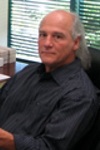
Dr. Russo is founder and scientific director of the laser material interactions group at the Lawrence Berkeley National Laboratory. His group has pioneered the development of laser ablation for chemical analysis, with an almost 30 year contribution to fundamental and applied research topics, with over 200 refereed scientific publications. Fourteen students have received their PhD degree under his direction at the University of California, Berkeley. Dr. Russo also is president and founder of Applied Spectra, Inc. The company manufactures analytical instruments using LIBS and Laser Ablation with ICP-OES and ICP-MS.
Andrea Ulrich

Andrea Ulrich studied chemistry in Hamburg, worked in industry and academic research. Since end of 2001 she is head of the plasma spectrometry team at EMPA - Swiss Federal Institute for Material Testing and Research. Her general research interests focus on the development of analytical methods and couplings to plasma mass spec-trometry for application in material science. Current projects focus on setups for size fractionated analysis of na-noparticles in liquids or aerosols based on couplings of field flow fraction or scanning mobility particle sizer to ICPMS, as well as on a micro-flow-capillary development with implemented electrochemical device for the in-situ investigation of local corrosion processes.
She supervises several PhD projects, is active in international networks and expert in several standardisation com-mittees. In February 2009, she received the Sandmeyer Award together with N. Heeb and L. Emmenegger for the investigation of catalytic processes in diesel particle filter systems.
Frank Vanhaecke
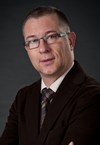
Frank Vanhaecke (°1966) is Professor in Analytical Chemistry at Ghent University (Belgium), where he leads the ‘Atomic & Mass Spectrometry – A&MS’ research unit that focuses on the determination, speciation and isotopic analysis of (trace) elements via ICP – mass spectrometry (ICP-MS). One of the specific topics studied, is isotope ratio determination using single- and multi-collector ICP-MS in the context of elemental assay via isotope dilution, tracer experiments with stable isotopes and the use of small natural variations in the isotopic composition of metals and metalloids for provenance determination and for obtaining better insight into biological, environmental and geological problems. Frank is (co-)author of some 200 scientific papers in international journals, 15 book chapters and more than 350 conference presentations and is a Fellow of the Royal Society of Chemistry RSC. In 2011, he received a ‘European Award for Plasma Spectrochemistry’ for his contributions to the field.
Lu Yang

Dr. Lu Yang joined National Research Council Canada (NRC, Ottawa, Canada) in 1996. She is a Research Officer at Chemical Metrology group and leads research in applications of ICPMS and MC-ICPMS. Her research focuses on the development of accurate and precise methodologies for the determination of trace elements by isotope dilution ICPMS, for the quantitative speciation of trace metals (methylmecurry, butyltins, selenomethionine and arsenobetaine) in various sample matrices by SPME, GC, and HPLC, in combination with species specific isotope dilution ICPMS detection or by GC-MS and LC-ESI-MS detections, and for the quantitative proteomics with element tag approach using isotope dilution LC-ICP-MS or LC-ESI-MS. Her recent research interest is on the development of state-of-the-art methodologies for high accuracy and precision isotope amount ratio measurements using MC-ICPMS for the certification of isotopic certified reference materials, and for applications in isotopic fractionation studies, provenance studies, geological applications and environmental applications for fingerprinting sources of contaminant metals. The isotopic measurements for mercury, germanium and indium from her lab have been adopted by IUPAC as the best available isotopic composition measurements in the 2011 Table. She is the author or co-author of over 70 scientific publications in high impact international journals and one book chapter. She is a member of the IUPAC Subcommittee on Stable Isotope Reference Material Assessment under the Inorganic Division, and the Commission on Isotopic Abundances and Atomic Weights. She currently serves as the director of Ottawa Valley for the Canadian Society for Analytical Sciences and Spectroscopy. She is a recipient of NRC’s Outstanding Achievement Award in Research and Technology Development in 2000. Many postdoctoral fellows, PhD students and visiting scientists have enjoyed conducting research in her laboratory.
Last update:







